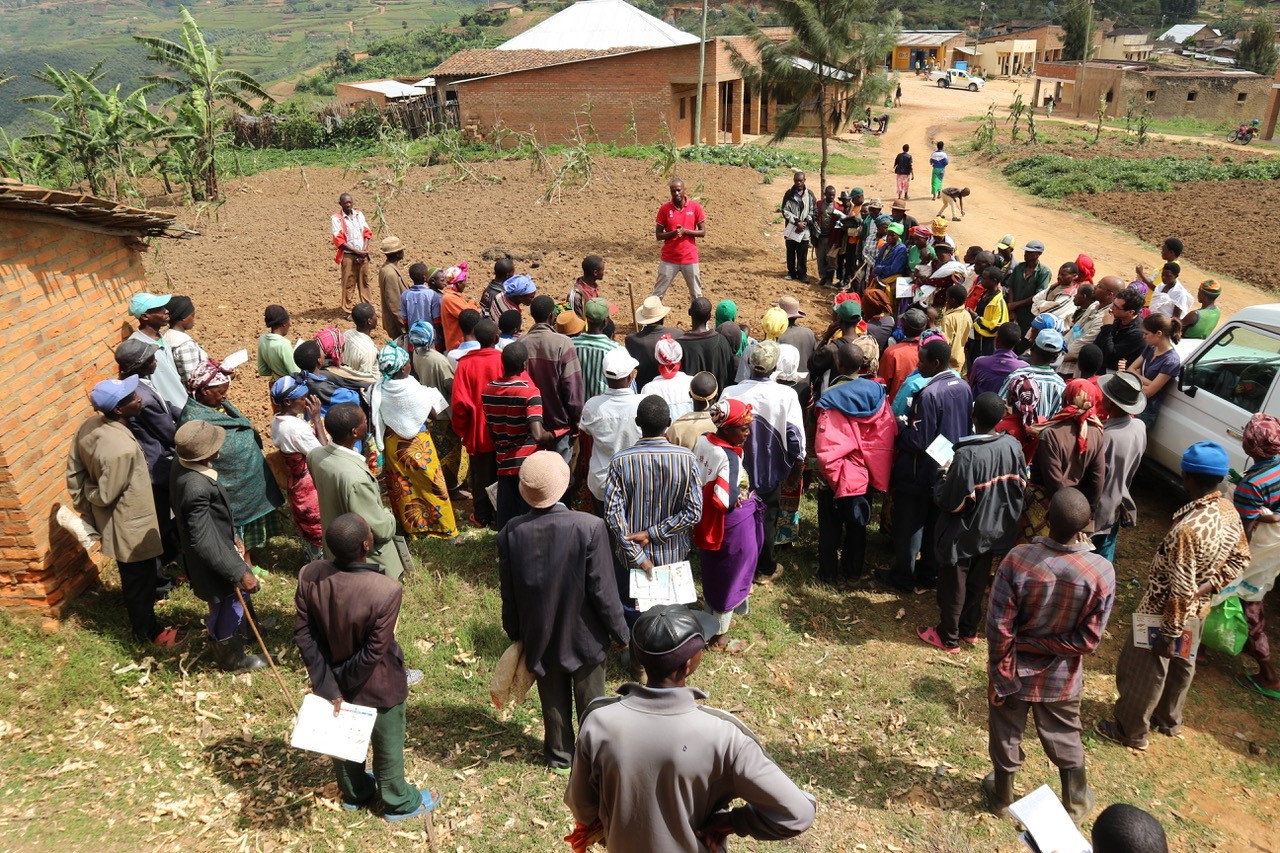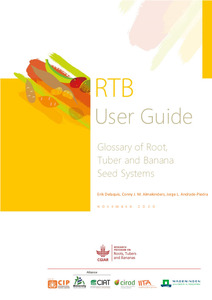
A research project may have all the requisites for solving a specific food security or nutritional challenge. Yet all too often it will stall at the pilot phase, never progressing to the stage where it can be taken up on a broader scale and achieve greater impact. So, what is the secret to ensuring that innovation is widely adopted and used? And what practical steps can be taken to address the widespread challenge of agricultural innovations ‘staying on the shelf’, especially given increasing pressure from the international donor community to ensure that scaling occurs more swiftly?
Three members of the CGIAR Research Program on Roots, Tubers and Bananas (RTB) team – Graham Thiele, Marc Schut and Cees Leeuwis – set out to explore this conundrum and find some answers when they guest edited a Special Issue of Elsevier’s Agricultural Systems journal recently, with the theme: Science of Scaling: connecting the pathways of agricultural research and development for improved food, income, and nutrition security. The Special Issue brings together 10 publications, all of them open access, which analyze critical success factors related to the technological, institutional and organizational dimensions of scaling innovation. Presenting case studies from Africa, Asia and Latin America, the publications provide supporting empirical evidence of the factors required for successful scaling and pinpoint cross-cutting lessons learned.

One Acre Fund works with approximately 450,000 farm households in Rwanda, and is collaborating with CIALCA and RTB to improve their innovation delivery model at scale. Photo credit Marc Schut
The Special Issue contains four papers that link directly with RTB. One key publication is the reconstruction of the development and scaling of orange-fleshed sweetpotato during the past 25 years to counter the high levels of vitamin A deficiency among vulnerable populations in sub-Saharan Africa (SSA). A study conducted in 2019 showed that by July 2019, orange flesh sweetpotato had reached 6.2 million households in 15 SSA countries and it is now the leading biofortified crop in Africa. However, as described in the paper, achieving that result involved a long and complex scaling strategy.
“A first step was to create demand among consumers who initially preferred white or yellow-fleshed sweetpotato which lacks vitamin A. Other essential complementary innovations for the scaling of orange flesh sweetpotato were to develop seed systems and advocacy,” said Graham Thiele, RTB Director, who jointly authored the paper with Jan Low.
Another RTB publication presents the Scaling Readiness approach, which was developed by Wageningen University and CGIAR through RTB. Building on an approach used by NASA, Scaling Readiness has been adapted to support scaling of innovation in the agricultural research for development sector. The approach encourages critical reflection on how ready innovations are for scaling and what appropriate actions could accelerate or enhance the process.
“Scaling Readiness has been extensively tested under RTB and used to develop, implement and monitor scaling strategies for 8 innovation packages in 14 countries,” said co-author Cees Leeuwis of Wageningen University. “This approach is especially valuable as it can support scaling strategy design at both project and portfolio level.”
Findings from a farm typology study carried out as part of a collaboration between the CGIAR Consortium for Improving Agriculture-based Livelihoods in Central Africa (CIALCA) and the One Acre Fund, a large development organization promoting agricultural inputs in Rwanda, providing a starting point to fine-tune the scaling strategy by ensuring that rollout was more context- and client-specific.
“The approach taken here was to characterize One Acre Fund’s clients into distinct groups or farm household typologies, using an approach that allows us to understand farmer diversity at scale” explained co-author Marc Schut working with IITA and Wageningen University. “Next steps for this partnership are to validate the typologies and to (re-)design innovation packages and scaling strategies for specific farm types.”
Despite the strong potential of Farmer Business Schools to benefit large numbers of farming households, attempts to extend the uptake of this innovative model require rethinking both innovation and scaling. Using case studies in four Asian countries, this paper analyses the dynamics and roles of research and development partners involved in scaling the innovation.
“The conclusion we reached is that to scale such a complex model, it is imperative to adopt a systems understanding of innovation and scaling,” said co-author Arma Bertuso of the International Potato Center. “Also, research-development partnerships are critical to advancing such an understanding, resulting in greater prospects for wider adoption and impact.”

The Editorial to the Special Issue proposes three Research Domains for the Science of Scaling: (1) ‘Understand the big picture of scaling innovation’, which can inform more realistic ideas about the factors, conditions and dynamics that affect innovation and scaling; (2) ‘Develop instruments that nurture efficient and responsible scaling’, which comprises new approaches, concepts and tools that can facilitate the development of evidence-based scaling strategies; and (3) ‘Create a conducive environment for scaling innovation’, which focuses on institutional arrangements, partnership models, and monitoring and learning for scaling of innovation.
The Guest Editors conclude that “Working on the Special Issue has taught us valuable lessons about scaling of innovation in the agricultural research for development sector. First and foremost, there is a need to better understand and guide scaling processes and development more realistic ideas about how scaling happens in society. There is also a need to improve the alignment of short-term projects with long-term pathways that are associated with scaling innovation. The work on the Special Issue confirms that RTB is at the forefront of developing and applying the Science of Scaling in the CGIAR; something to be proud of!”



